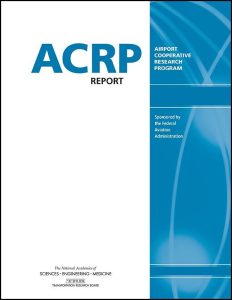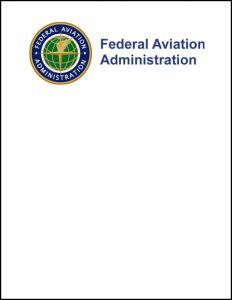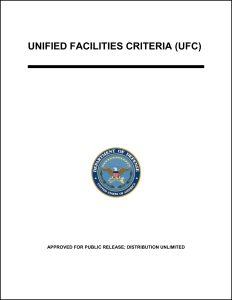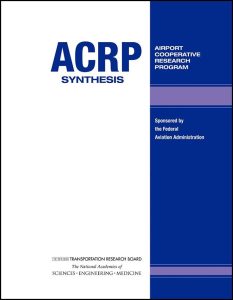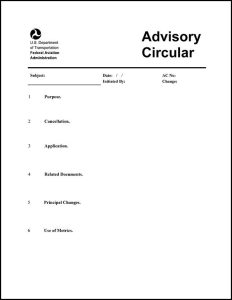To narrow the library of airside resources, use the filter boxes or airport map below or search box above.
Click an item below to expand.
Resources Matching Your Search
2013
ACRP Report 96 provides best practices for planning, designing, and marking apron areas for all sizes and types of airports in the United States. Apron planning and design considerations include facility geometrics, aircraft maneuvering, apron/airfield access points, operational characteristics, markings, lighting, and aircraft fleets. The report summarizes apron planning and design best practices for incorporating flexibility, increasing efficiency, and enhancing the safety of apron facilities.
2022
This webpage offers FAA design tools and drawings, including Airport Design Technical Video Series, ADG and TDG Classification Table, Taxiway Design Tool for High Speed Exits, Taxiway Fillet Design Tool, Runway Exit Design Interactive Model, and Drawings for Change 1 by Taxiway Design Group.
2016
ACRP Report 159 assists general aviation airport managers in determining the most cost-efficient and appropriate preventative maintenance solution to common pavement issues. In addition to the report, two additional products were developed. The Airport Pavement Maintenance Recommendation Tool (available at http://acrppavement-tool.tti.tamu.edu) is an interactive tool that will assist in identifying pavement issues and will make appropriate recommendations. The Field Guide for the Airport Pavement Maintenance Recommendation Tool will assist in identifying the specific pavement issues while in the field.
2020
This manual provides standardized airfield, heliport, and airspace criteria for the geometric layout, design, and construction of runways, helipads, taxiways, aprons, landing zones (LZs), short takeoff and vertical landing (STOVL) facilities, unmanned aircraft system (UAS) facilities, and related permanent facilities to meet sustained operations for U.S. Army, Navy, Air Force, and Marine Corps airfields.
2001
This document establishes general concepts and criteria for the design of airfield pavements for the U.S. Army, Navy, Air Force, and Marine Corps. This document prescribes procedures for determining the thickness, material, and density requirements for airfield pavements in non-frost and frost areas. It includes criteria for the California Bearing Ratio (CBR) procedure and elastic layered analysis for flexible pavements and the Westergaard analysis and elastic layered analysis for rigid pavements. The elastic layered analysis for rigid pavements covers only plain concrete, reinforced concrete, and concrete overlay pavements.
2001
This document presents criteria for the evaluation of the load-carrying capacity of pavements used (or to be used) for the support of aircraft. An evaluation is conducted to assess the allowable traffic that a pavement can sustain for given loading conditions or the allowable load for a given amount of traffic without producing unexpected or uncontrolled distress. This document is for use in evaluating U.S. Army, Air Force, Navy, and Marine Corps airfields and heliports and is applicable to conventional-type pavements. The procedures presented include direct sampling and non-destructive testing techniques. The document also describes computer programs that can be used for pavement evaluation.
2019
ACRP Research Report 203 provides guidelines on the collection, use, maintenance, and application of pavement condition data at airports. Such data include conditions that are visually observed as well as those that are obtained by mechanical measurement or other means. A key part of the background study leading to this report was the development of case studies of seven airports or airport agencies on their experiences with pavement data collection, use, and management.
2020
Collecting pavement condition data is essential for managing airport pavements and ensuring safe operations. However, the availability of information for airports has not kept pace with the rapid changes in technologies. TRB hosted a webinar that discussed how pavement condition data are collected, used, and managed by airports. Presenters provided an overview of the available technologies for collecting pavement condition data as well as examples of matrices that link a data collection purpose to a data collection method.
2019
ACRP Synthesis 97 explores the concept of upgauging, which is an airline industry technique enabling air carriers to increase capacity by adding seats to existing jets and replacing smaller planes with larger ones. While these practices are generally the result of airline network and systemwide strategies, their impacts are often experienced at the local level by the airport community. This report takes into account the principal drivers and techniques of upgauging from airline and airport perspectives. This study is based on information acquired through a literature review, survey results from 18 airports participating in the study that experienced major variations in passenger enplanements over the previous five to 10 years, and interviews with representatives of five airports and four state transportation agencies.
2019
This advisory circular (AC) provides guidelines for the development of state aviation standards for airport pavement construction at non-primary, public-use airports, as provided for in 49 United States Code (USC) § 47105(c) and 49 USC § 47114(d)(5). This AC also provides guidelines for the use of state highway material specifications for airport pavement construction at non-primary, public-use airports.
